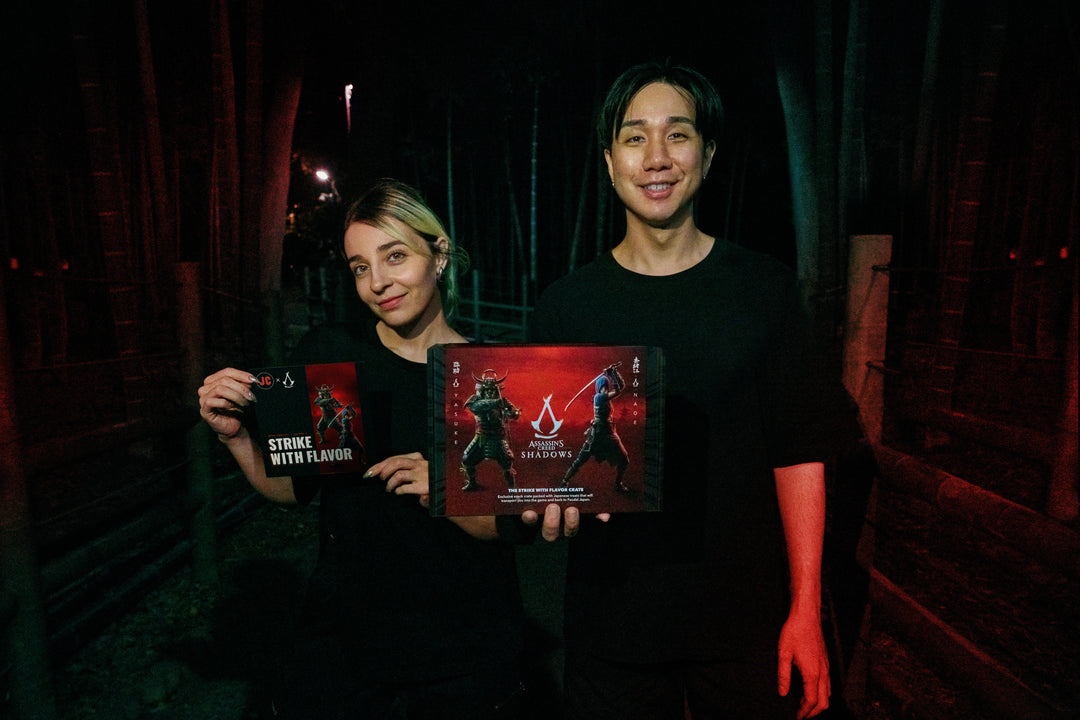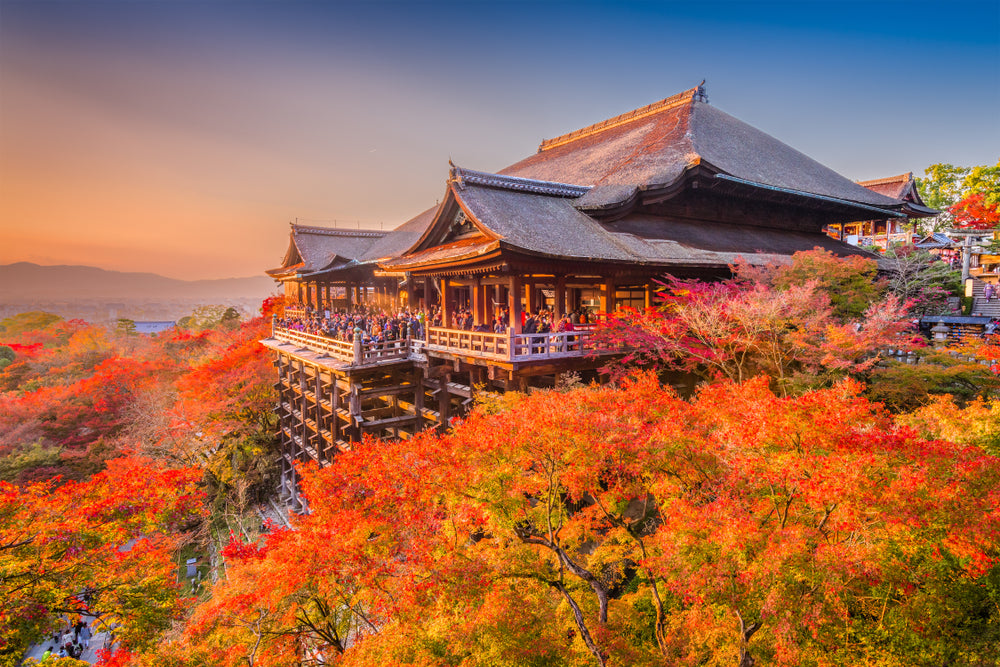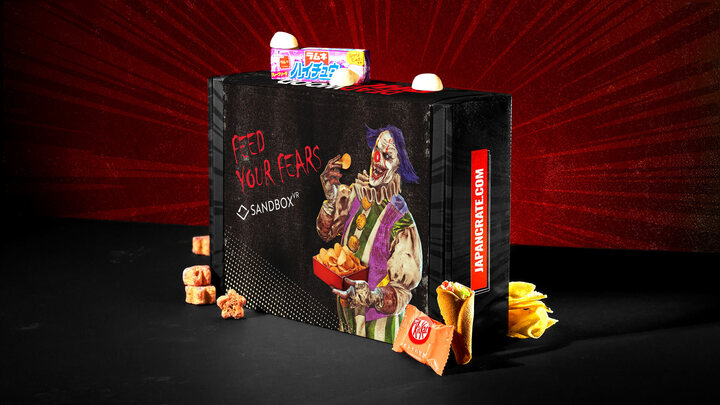Japanese Wagashi Ultimate Guide
Japan has some of the world's most intricate and diverse cuisines, from sushi to ramen and everything in between. It is safe to say that Japanese cuisine, in and of itself, contributes to the annual decision of millions of tourists to travel there. But have you ever heard of or eaten wagashi? Japan also boasts a wide range of traditional Japanese desserts and confections that may be less well-known but are likely to astound visitors' sweet tooth too. Read on and discover the long history of traditional Japanese confections and the distinctive Japanese sweets or wagashi in which Japan takes great pleasure. Some of these sweets have a rich heritage, while others are works of art that you should taste while you are in Japan.
What is Wagashi?

Traditional Japanese sweets are called wagashi. These Wagashi are delectable traditional Japanese snacks and works of art since they frequently have exquisite and detailed designs. Japanese wagashi can have different flavors and designs depending on the location, the season, or just the artisan's preferences. As a result, wagashi refers to a variety of desserts that are typically produced with plant-based versions of traditional Japanese ingredients such as sweet red bean paste, rice cake, rice flour, sesame paste, and chestnuts. They often contain plant elements, and their exquisite, naturally inspired shapes frequently highlight their botanical origins. These traditional snacks and candies are frequently shaped as objects like flowers, fruits, and leaves.
In addition, while still sweet, wagashi often employ less sugar than conventional western desserts, creating a refined flavor that pairs amazingly well with green tea. There is also seasonal wagashi that comes in various forms, including the well-known sakura mochi and manju that are sold in the spring. Seasonal wagashi are designed using certain themes, which commonly feature cherry blossoms for spring, water for summer, leaves for autumn, and snow for winter. Seasonal wagashi also uses particular flavors.
History of Wagashi Japanese Sweets

The Japanese word for sweets, "Kashi," was formerly only used to describe fruit and nuts. All that changed was when Japan began importing sugar from China. The trade expanded quickly, and sugar soon found its way into Japanese households. Wagashi was created not long after when Japanese culinary art emerged as a result of the importation of sugar. Its popularity peaked in Japan during the Edo period. During this period, when Japan started importing tea from China, the tradition of pairing wagashi with Japanese tea ceremonies first became popular. During this time in history, Japan was experiencing both economic expansion and a love of the arts and culture. Even today, some of the wagashi traditional sweets that were first cooked during this period resemble some of the delicious foods we eat today.
Moreover, the Meiji period (1868 to 1912) brought increasing international trade to Japan and the introduction of the first modern ovens. This assisted in shaping new wagashi variations, some of which were baked. As a result, further wagashi varieties were developed, but they were all characterized by seasonal features. Depending on the season, many Wagashi variations appear in shops nationwide, but they are only offered for a limited period.
What is Wagashi Made Of?

When it comes to ingredients, there are no set rules on what may or cannot be used to make Wagashi. Then again, the majority of the materials used to make wagashi are sourced from plants, including fruits, nuts, leaves, beans, and starch. Only eggs are frequently made from animal products. Depending on the variety, non-plant components, including butter, milk, and cream, may be utilized. Below are a few of the ingredients that are most frequently used to create wagashi.
A key consideration is how the season affects the ingredients needed to make wagashi. Since the idea of the four seasons and wagashi are closely related, wagashi makers attempt to use seasonal Japanese ingredients to create wagashi that best capture the distinct beauty of each season. Beans, including azuki, white beans, green beans, red beans, and other types of beans and peas, are some of the most commonly utilized ingredients. Of course, all types of rice, including glutinous rice flour, non-glutinous, and other varieties, as well as soybean powder, soybean flour, wheat flour, and white sugar, are essential ingredients in making fresh sweets or wagashi.
Best Traditional Japanese Sweets
1. Mochi

Among all wagashi, mochi is arguably the most well-known. Mochi is a sticky rice-based Japanese wagashi that can be eaten either savory or sweet. The required shape is created by combining glutinous rice with additional ingredients and shaping it into a paste with a hefty mallet. There are several different types of mochi, including daifuku, sakura mochi, and kusamochi. It is frequently consumed on special occasions and has been a tradition for Japanese New Year celebrations since the Heian era (784-1185)/
2. Daifuku

Daifuku is made by wrapping mochi, or tender rice cakes, in a tiny circle of silky, sweet bean paste. They are sprinkled with a little potato starch to protect the sweets from sticking together. Daifuku should be taken practically immediately because it gets hard if left out. Over time, wagashi artisans developed a variety of innovative techniques to create fresh and distinctive daifuku. For instance, Mame Daifuku also has sweet azuki and black soybeans! Additionally, ice cream, strawberries (Ichigo), and beans (mame) are common daifuku varieties. In fact, Ichigo Daifuku has surged in popularity in the past few decades since they contain an entire fresh strawberry within!
3. Manju

Manju is a Japanese confection available in a wide range of forms. This manju is a type of steamed cake filled with anko, a sweet red bean paste. Before it is steamed, the dough is created by kneading flour and other ingredients. Manju was introduced to Japan for the first time by a Chinese Buddhist monk who had traveled to Japan to learn Zen during the Muromachi Period. In addition, freshly steamed manju is one of Japan's most well-liked snacks and is quite delicious. Many Japanese people enjoy the manju fluffy bun's outside and the mild sweetness of the anko interior.
4. Dorayaki

In Japan, dorayaki is a popular traditional wagashi among people of all ages. Dorayaki is cooked and filled with delicious azuki red bean paste. The early 1900s Tokyo confectioner who invented the treat called it "dora," after the Japanese word for a gong. It is because dorayaki consists of an anko sandwiched between two pieces of dough that resemble small pancakes. In addition to anko, some dorayaki can include whipped cream or a sweetened chestnut paste. Although the exact origins of dorayaki in Japan are still unknown, the most popular legend dates to the Heian Era. Benkei, a Bushi warrior serving Yoshitsune Minamoto, made a sweet by inserting anko in two burned rounds of dough as a way to show his gratitude to a family who took care of him when he was hurt. The origins of dorayaki are now thought to have originated from Benkei's sweet. It always tastes good to combine anko with lightly baked dough. Dorayaki is available everywhere, including the konbini(convenience stores).
5. Yokan

Yokan is a jelly-like, sweet, and firm snack made with sugar and kanten agar, a type of gelatin derived from seaweed. It is available in a variety of flavors, including azuki bean, black sugar, and green tea. In this kind of wagashi, chopped seasonal ingredients like sweet potato and chestnut may also be used. This wagashi first appeared in the middle of the Edo Period, but it wasn't until the Meiji Era that Japanese households began to consume it in large quantities. Yokan is a raw candy, making it particularly difficult to preserve at the time. It was frequently offered as a dessert following osechi meals or Japanese New Year's dishes. However, nowadays, Yokan typically comes in little, single-serving bars with a shape resembling packs of chewing gum, and now has a long shelf life and doesn't need refrigeration.
6. Taiyaki

The Japanese fish-shaped cakes known as taiyaki are made of wheat and filled with azuki sweet bean paste. In Japan, tai is a common fish, and yaki means to cook or fry. Hence, the shape is where the name of this wagashi originates. Additionally, Taiyaki is a dessert produced by entirely enclosing anko paste in dough shaped like a red snapper fish before being baked. Anko is the primary flavor of Taiyaki, but in recent years, custard, vanilla ice cream, matcha powder, cherry blossom, and chocolate paste have all gained popularity as alternatives to anko. The dessert is frequently served warm and becomes more prevalent in the winter, which you can often get at food stands at the Winter festival.
7. Castella

Castella is perhaps the Wagashi confection with the most noticeable Western influence. Although there are numerous theories on the word's origin, it is generally accepted that it derives from "Castela," the Portuguese name for the Kingdom of Castile in Spain. Also, the original version of this was created in the 16th century and introduced to Japan by Portuguese traders. Eggs, sugar, wheat flour, honey, sugar syrup, and additional ingredients such as matcha, caster sugar, etc., are mixed to create the batter, which is then poured into a rectangle mold and baked in an oven. Every castella maker aspires to produce the ideal texture of Castella sponge cake, which is light, moist, fluffy, and delicate without the use of leavening. You may get Castella in supermarkets, sweet stores, and bakeries all around Japan. With just one mouthful of this well-liked Japanese souvenir snack, this fluffy cake's gentle flavor will delight your day.
8. Nerikiri

Nerikiri is the favorite wagashi for tea ceremonies. This Edo-era snack is a genuine work of art that displays the maker's skills. They have beautiful artwork, vibrant colors, and shapes that mimic natural items like flowers, birds, fruits, leaves, etc. To make the delicate dough for Nerikiri, Chinese potatoes, white bean paste, and Gyuhi, a softer version of mochi, are mixed together. After being thickened with either yam or flour, the bean paste used in the manufacture is meticulously sculpted into seasonal fruits or flowers. Around a sweet bean paste filling in the center, this colored dough is hand-shaped into various shapes and designs. Although plums and hydrangeas are quite popular, there are a ton of other design choices.
9. Anmitsu

Another wagashi dessert treat that is well-liked in the summer in Japan is anmitsu. It was originally a dessert made of diced fruit, red peas that had been boiled and chilled, agar jelly, and kuromitsu syrup. Mitsumame was originally sold as anmitsu in 1930 when the retailer Wakamatsu added some anko to it in Ginza, Tokyo. Anmitsu is still available today in Tokyo's numerous Japanese sweets shops and eateries. Although the fruits used in anmitsu differ from store to store, kiwi, tangerine, pineapple, peaches, and cherries are frequently utilized. Anmitsu pairs well with kuromitsu, a thick, sweet brown sugar syrup. There are many different types of anmitsu known as mitsumame, including fruit mitsumame with fruit on top, cream mitsumame with ice cream on top, and shiratama mitsumame with shiratama dumplings on top. Savor these wonderful harmonies of cut fruits, kuromitsu syrup, and agar jelly now.
10. Yatsuhashi

Traditional Kyoto-area wagashi, known as yatsuhashi, is offered as both soft sweets and toasted crackers. Rice dough is pressed into thin crepes, toasted on a hot pan, and coated with cinnamon and sugar to make yatsuhashi crackers. Rice flour dough flavored with cinnamon, matcha green tea, or sesame is used to make soft yatsuhashi, which is then folded around a piece of sweetened red bean paste. Everyone adores the soft yatsuhashi, sometimes called nama yatsuhashi, for its distinctive triangular shape and doughy texture.
Where to Buy the Best Japanese Wagashi Sweets?
1. Gunrindo

Gunrindo is one of the best wagashi places in Tokyo to quench your daifuku appetite because of its well-known mame-daifuku ("bean daifuku"). The mame-daifuku by Gunrindo has a mochi crust, tsubu-an filling, and whole red beans, creating an intriguing texture contrast and natural sweetness. It also has the ideal sweetness ratio to slight saltiness, making it the ideal addition to a cup of tea.
2. Akasaka Aono

Tokyo's Akasaka Aono wagashi store has produced some of the most delectable Japanese desserts for over a century. They provide a wide range of delicacies, including the plain-appearing yet tasty mochi, their mouthwatering yokan (red bean jelly), and their most popular Akasaka mochi, which is baked with walnuts and brown sugar. Although this wagashi business is slightly more expensive than the others, Akasaka Aono is unquestionably one of the top wagashi shops in Tokyo for fine Japanese sweet snacks because it has been perfecting the art of fresh wagashi-making for over 100 years.
3. Shiono

One of the best wagashi stores in Tokyo is Shiono, which opened its doors in 1883. It includes no additives or preservatives and is created with traditional, artisanal methods. Moreover, shiono is well known for its beautiful seasonal patterns, which result in nerikiri that are impacted by the ebb and flow of the seasons. Their prices reflect the great quality of their products, made using carefully selected materials. Despite the fact that their wagashi are on the expensive side, these delectable miniature works of art are worth it to try.
How are Wagashi Sweets Related to Seasons in Japan?

Seasons in Japan encompass more than just the local environment and weather. Through Japanese art, literature, cuisine, festivals, and many other facets of daily life, it is a concept that is lived, experienced, and celebrated. Japan has four distinct seasons: spring, summer, autumn, and winter . This concept of the four seasons is a recurring theme in Japanese culture, heritage, and traditionsthat shows how deeply and enduringly the Japanese people respect the shifting of the seasons. Celebrating the seasons also extends to cuisine, where Japanese sweets reflect seasonal beauties, and the wagashi perfectly represents this.
The relationship between Wagashi and the seasons can be demonstrated using several aspects of Wagashi. You won't find the same Wagashi varieties throughout the year if you visit the same Wagashi shop or Japanese tea salon. In addition, several Wagashi varieties use seasonal ingredients to emphasize celebrating the season in which the Wagashi is prepared. The shapes also vary according to the season, with cherry blossom season designs appearing in the spring and pine trees, crane, and bamboo shapes appearing in the winter to mark the start of a new year.
It's Japan Crate Time!
Japanese sweets come in various shapes and flavors, like Western sweet snacks and desserts. Yet what sets them apart are their daring flavors and centuries-old traditions. Don't be worried that you won't find anything you like. Hundreds of sweet treats, from extremely sweet candy to pleasantly sweet, grain-based buns, line the confectionery aisles of Japanese supermarkets.
Now that you are aware of the sweet delights that Japan has to offer, as well as the rich cultural background associated with them, you may satisfy your sweet craving at any time of the day. You may now be considering whether to order a package of sweets to be delivered to your door now. Just visit the Japan Crate and satisfy your craving with all the sweets and snacks you may get in one crate. Enjoy!
Author Bio







Leave a comment